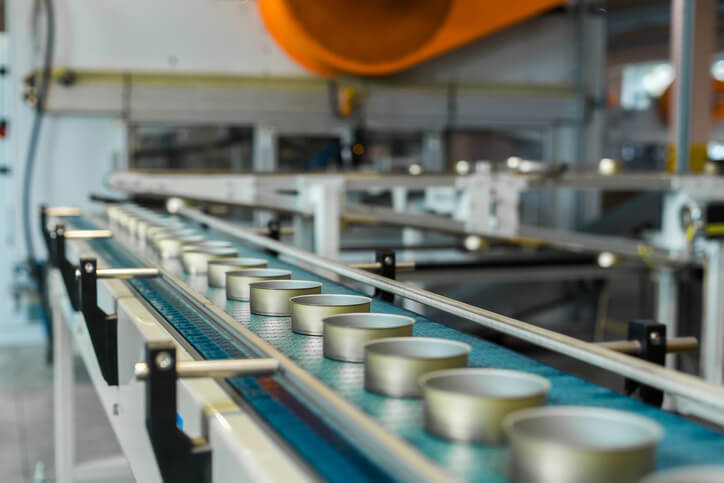Why One-Size-Fits-All is Not a Long-Term Strategy
Industrial automation is part of doing business in a production environment and has been for decades in one form or another. Conveyors, feeders, hoppers, robotics, and numerous other solutions have been hard at work for years making the products that the world needs. However, as technology advances and companies look for solutions that not only make production more efficient but also more aligned with long-term goals, the need for equipment that’s unique to a business’ needs grows in priority. Custom conveyor systems are one solution for achieving that level of efficiency and alignment.
While a conveyor system is just one aspect of a production chain, it’s arguably one of the most important. After all, if parts and components can’t get from different stages in a production chain to another, it won’t matter how advanced your robotics cell, parts feeder, and other equipment are because they won’t have parts to work with! Conveyors truly are the circulatory system that keeps a production facility alive and well. But it’s important to utilize conveyor systems that actually fit your production process, too.
For example, perhaps your parts — such as metal tubes or bars — must be properly oriented before they can escape the conveyor into the next stage. In this instance, a conveyor that simply moves from A to B won’t do the trick. Here, a custom conveyor that allows for bidirectional operation would be critical, as it allows for parts that don’t become oriented on the first pass to recirculate back around. Additionally, this type of custom conveyor can be configured to work with a variety of feeding and escapement options.
Just as important as the day-to-day operation of conveyor systems is the part they play in an organization’s long-term strategy. Every part that doesn’t move forward in production makes an impact on the bottom line. Regardless of how small that might be, it all adds up. X number of parts not produced per hour or day, multiplied by the number of days, and multiplied again by the potential revenue of that part equals money lost.
This makes an impact operationally, too. Organizations are constantly seeking new automation and process improvements to make their production more efficient and cost-effective. A custom conveyor system goes a long way in benchmarking performance and helping companies achieve the results they want. Let’s explore a few more ways that a custom conveyor in your production environment is an investment that makes sense.
3 Reasons to Consider a Custom Conveyor
1. Orientation
We’ve touched on this, but being able to properly orient parts as they’re fed — whether manually or via a previous process — into a conveyor’s lane is critical to an efficient overall production process. Proper orientation not only ensures the parts can be fed to the next stage but prevents excess costs due to damaged or lost parts. Additionally, the orientation also saves you from having to deal with time-consuming and potentially dangerous manual processes that must be conducted by hand.
The Feedall difference: Feedall custom conveyors can be designed to support numerous loading and escapement needs. Our conveyors can be quickly and easily reconfigured for changing requirements. Each custom conveyor is built using a standard model that is updated for specific production needs. This ensures that you don’t have to make another significant investment in a separate system. Learn more here.
2. Integrated Controls
As with many other devices in today’s world, smart technology can be a massive benefit for adapting to changing circumstances and keeping work moving forward. The same can be said for your conveyor system. If you were to use a standard conveyor, it’s possible that you could run into production challenges such as part jams and belt issues, which impact overall productivity. A custom conveyor that features integrated controls monitors processes in real-time to prevent such incidents.
The Feedall difference: Our custom conveyors are wired with sensors and other intelligence features. These monitor important aspects of production such as part flow, belt speed, and even overall productivity and performance. If there are any issues, your team is notified and the situation can be addressed promptly to prevent damage or setbacks.
3. Integrated Inspection Equipment
Another reason to consider a custom conveyor system over a standard bulk conveyor is that inspection equipment can be easily integrated. This allows for real-time quality monitoring of the parts themselves — not just the conveyor’s performance. This type of equipment can be integrated for a variety of part quality management needs, too — from gauge-testing parts coming out of centerless grinders or eddy current devices to measure stress fractures in metal parts — custom conveyors have the ability to fully integrate these devices in-line rather than off-line.
The Feedall difference: In addition to our custom conveyors being able to self-monitor their own performance and its impact on your bottom line, we can also design your solution to take advantage of these integrated inspection tools. This allows you to conduct multiple levels of quality assurance as production is taking place instead of afterward. As a result, your business saves a significant amount of time and money in running these critical operations concurrently.
Find Your Custom Conveyor Solution Today
The benefits of a custom conveyor solution can’t be denied — they allow your organization to achieve unprecedented levels of productivity while remaining flexible enough to change with your business needs. With a custom solution engineered for your parts and production environment, you maintain higher levels of uptime, reduce operational costs, reduce expenses associated with maintenance and reconfiguration, and enjoy numerous other benefits.
The Feedall team is ready to work with you on your custom conveyor system. The first step is to provide your equipment parameters and needs, and then we’ll share how we can design your conveyor system to support them for years to come.
